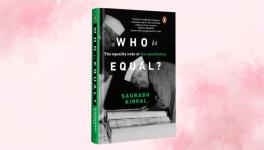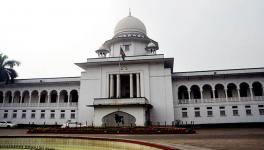Dual Citizenship and Sikkim’s Ticking Time-Bomb - IIx1

The issues surrounding Sikkim’s old citizenship document, the Sikkim Subject Certificate (SSC), have over the years taken a complex dimension owing to the ad hoc manner in which they have been dealt with. The different levels of Sikkimese citizenship had been touched upon earlier as well as the issue of forged docume nts. However, the old Sikkim Subjects Regulation, 1961 and the corresponding rules suffer from being inherently patriarchal. On the other hand, in the post-merger era, measures taken to smooth over the transition from a monarchy to a republic have ended up creating confusion for all those involved.
In Biraj Adhikari v. State of Sikkim and Ors, the issue of forged documents has been pursued and four years on, the petition is still under litigation. NewsClick spoke to Biraj Adhikari primarily regarding the issue of forged documents. However, what emerged was that the entire system appears flawed. According to him, the root of the issue is the systemic corruption that exists in the state machinery. One of the supporting documents required to accompany an application for receiving a Certificate of Identification (COI) is a verification from the Panchayat. However, considering that 31,180 documents were found to be forged, the suspicion would ultimately fall on the Panchayats for being a party to the act.
Also Read | Dual Citizenship and Sikkim’s Ticking Time-Bomb - I
The Sikkim Subjects Regulation, 1961 has made the inheritance of status dependent upon the father’s status. However, there was a provision in the Rules for the Chogyal to exercise discretionary power upon an application. This provision could technically provide some relief on a case basis to those aggrieved at not receiving the status of being a subject due to their fathers’ status. Such a provision has not been included in the subsequent laws made with regard to the COI. Under the Sikkim Subjects Regulation, a Sikkimese woman who married a non-Sikkimese man would lose her status as a Sikkim subject. However, this was not the case for men marrying a non-Sikkimese woman. Further, a non-Sikkimese woman could become a Sikkim Subject based on her husband’s status.
The Married Women’s Property Regulation, 1962 also provided for a Sikkimese woman to lose claim over any landed property if she were to get married to a non-Sikkimese man. However, if the immovable property was registered in her name prior to her marriage, then she would be able to enjoy the property only for her lifetime. This came up for challenge in 1977 in Padma Kumari Ganesan v. Secretary, Land Revenue Department, Govt. of Sikkim. In this case, a woman married a non-Sikkimese man; however, she was the only heir of her mother and her mother wanted to transfer the land in her name. This was refused by the Land Revenue Department. The High Court of Sikkim found that the Regulations had not been notified and hence, there was no legal bar for the land to be transferred in Padma Ganesan’s name.
In 2008, the legislative assembly passed the Sikkim Succession Act. This Act provided for Sikkimese women to be able to transfer land to their descendents provided that they had married a Sikkimese man. However, if the husband was non-Sikkimese, then the land would be transferred to the woman’s siblings. This Act was challenged in Basanti Rai & Ors. v. State of Sikkim by a group called Daughters of Sikkim. The High Court here too found that while the Act had been passed, it had never been notified. Hence, it could not be legally enforced. What emerges is that the old laws are clearly not in consonance with the times.
Apart from speaking about the issue of forged COIs, Biraj Adhikari hinted at revamping the entire system of COI such that the number of those aggrieved by the existing situation may be reduced. According to him, a part of the problem is how COIs are issued. There are COIs issued on the basis of a male ancestor’s name being enumerated in the Sikkim Subjects Register. These will contain a serial number and a volume number. Then there are those issued on the basis of land documents which will obviously not contain a volume or serial number. Then the third category of COI holders are those who rendered service to the Government of Sikkim during the Chogyal’s rule. However, those issued to those who had rendered service have an expiry date, i.e. they can legally only be issued to two generations, the person rendering service, and their children.
Also Read | Article 370: Apprehensions That NE Will be Next
There are some in Sikkim who feel that it may be better to do away with the entire system. However, as Sikkim joined the Indian Union based on a political agreement, it would not bode well for India to renege on it. Therefore, what such a new system would look like would have to be based on wide public consultation. While some of the old Sikkimese who still possess their SSCs would concede to a system of different classes of rights based on descent, Article 15 of the Constitution of India would not allow for such a law to be passed. The inherent discrimination in the Sikkim Subjects Regulation has been preserved by Article 371F however, the question that would arise would be whether a special provision for a state can supersede the Fundamental Rights in Part III of the Constitution.
Also Read | Why Sikkim’s Constitutional Position is ‘Special’
Get the latest reports & analysis with people's perspective on Protests, movements & deep analytical videos, discussions of the current affairs in your Telegram app. Subscribe to NewsClick's Telegram channel & get Real-Time updates on stories, as they get published on our website.
























